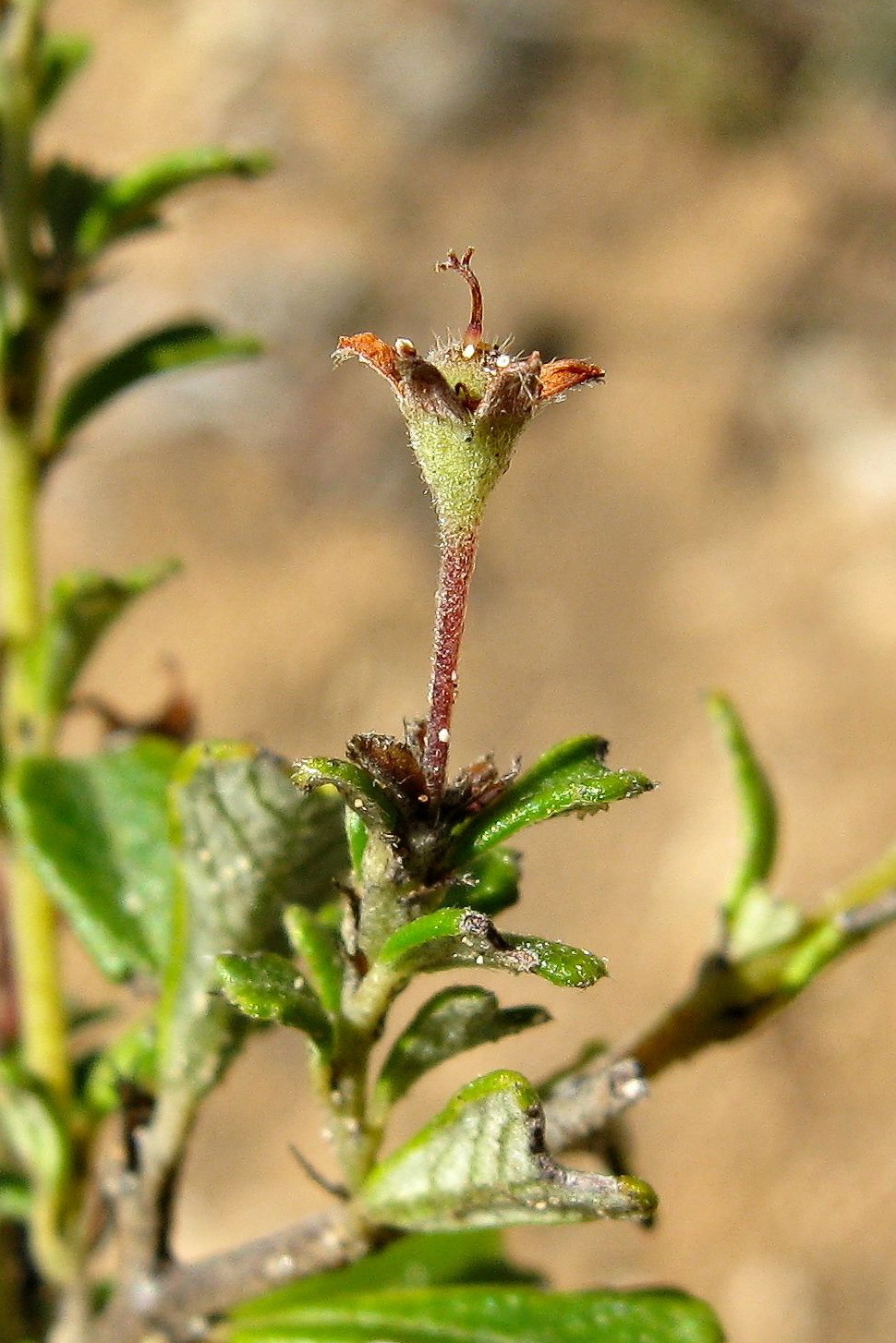Pomaderris obcordata
FenzlShrub, 0.3–1 m high; branchlets with dense stellate and sparse simple hairs. Leaves obovate, obcordate, or cuneate, 6–20 mm long, 3–12 mm wide, entire to bilobed or tridentate; margin plane to recurved; upper surface glabrous, lower surface stellate pubescent with sparse appressed simple hairs over veins; stipules 2–3 mm long, persistent. Inflorescence umbellate, terminal, 1.5–3 cm wide; bracts weakly persistent. Flowers white to pink, externally grey-pubescent with dense stellate and sparse simple hairs; pedicels 2–8 mm long; hypanthium 1–1.2 mm long; sepals 1.8–2.5 mm long, deciduous (rarely persisting); petals absent; disc conspicuous, glabrous; ovary inferior, summit stellate-pubescent, style branched in upper third. Operculum poorly defined, seed usually released through basal/medial slit. Flowers mainly Jul.–Sep.
Also SA. Known in Victoria by only 2 collections, the most recent (1969) from the Little Desert near the South Australian border, and a pre-1900 collection purportedly from the northern Grampians. Known to grow in heathland, shrubland and mallee scrub, commonly on sandy soils with laterite or limestone, but Victorian habitat unknown.
The absence of recent collections from the original specimen localities, both of which are in protected, largely undeveloped but well-collected areas, suggests a possibility of inaccurate locality recording as much as it does extinction of this very distinctive species from Victoria.
Photographs displayed here are of plants from South Australia.
Walsh, N.G. (1999). Pomaderris. In: Walsh, N.G.; Entwisle, T.J., Flora of Victoria Vol. 4, Cornaceae to Asteraceae, pp. 85–109. Inkata Press, Melbourne.
 Spinning
Spinning

